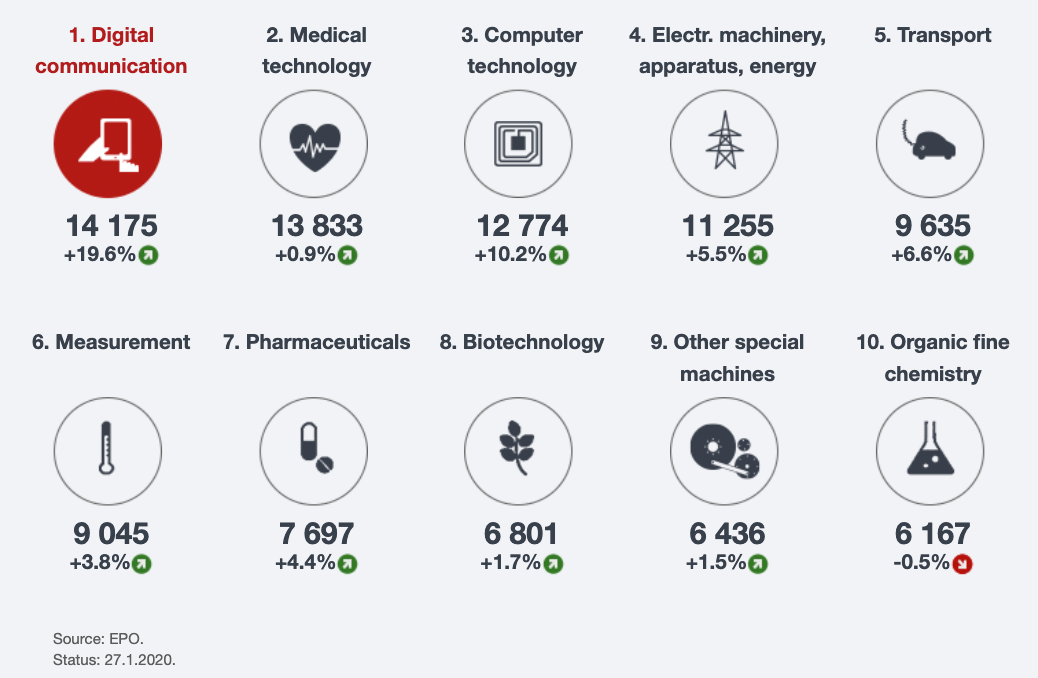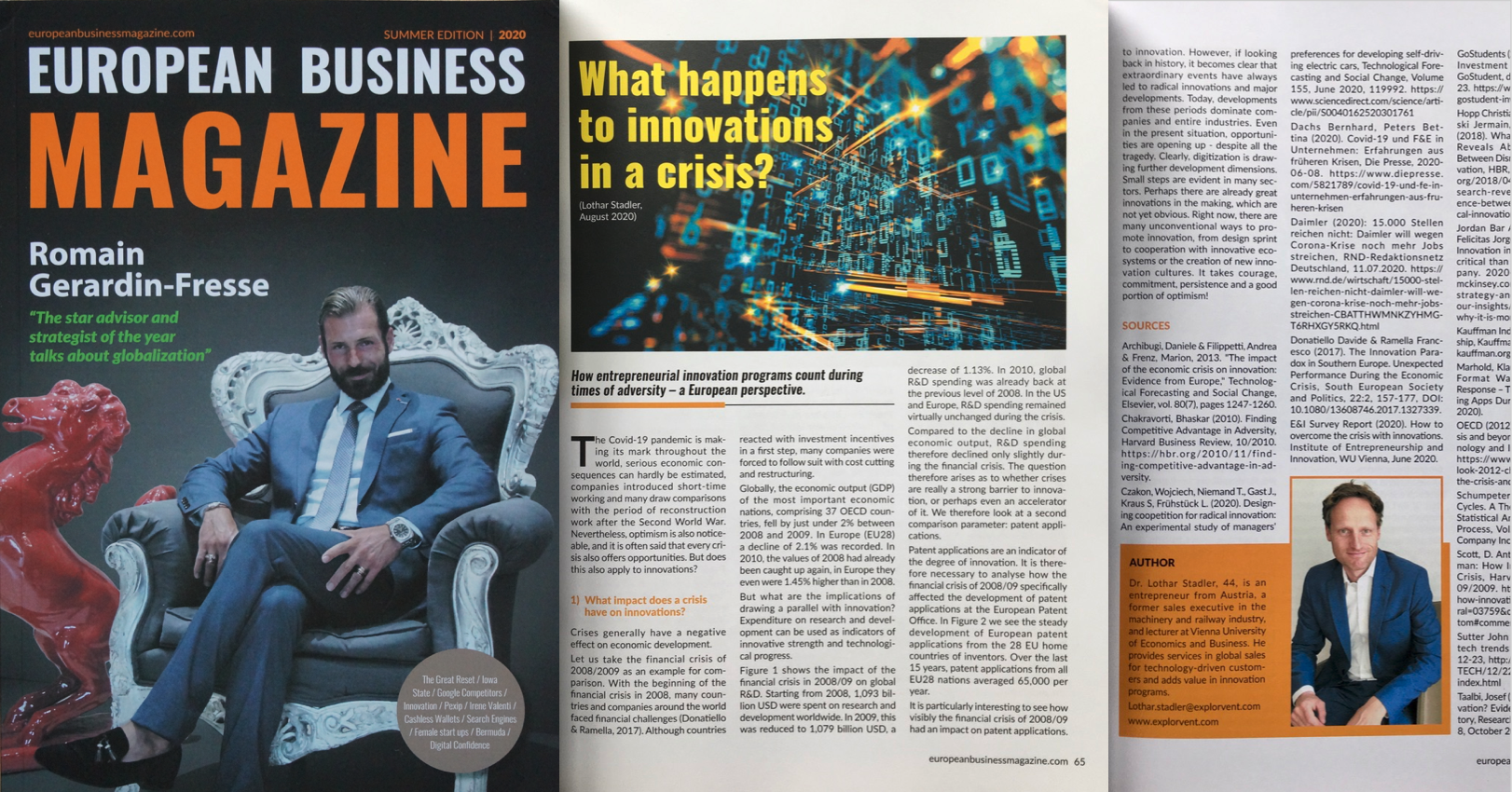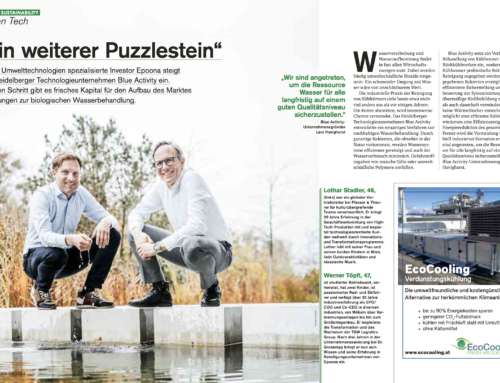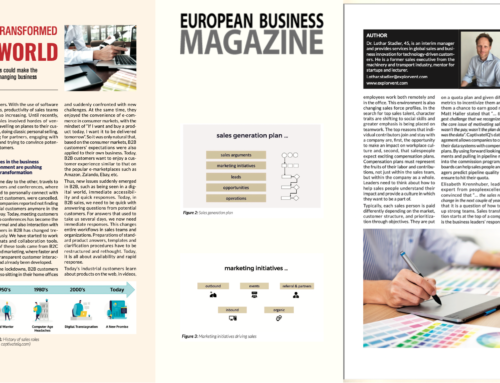How entrepreneurial innovation programs count during times of adversity – a European perspective.
by Lothar Stadler in the European Business Magazine
Printed Edition – Summer 2020
The Covid-19 pandemic is making its mark throughout the world, serious economic consequences can hardly be estimated, companies introduced short-time working and many draw comparisons with the period of reconstruction work after the Second World War. Nevertheless, optimism is also noticeable, and it is often said that every crisis also offers opportunities. But does this also apply to innovations?
What impact does a crisis have on innovations?
Crises generally have a negative effect on economic development. Comparisons with the financial crisis 2008/2009 can give answers to that question. Compared to the decline in global economic output, global R&D expenditures declined only slightly during the financial crisis. Data show that the financial crisis had a negative short-term effect on the number of patent applications. In a long-term view, patent applications worldwide rose again over the last decades.
Radical innovations challenge established technologies
As early as 1939, Joseph A. Schumpeter, one of the most important economists of the 20th century, came up with the concept of “Business Cycles”, which are supposed to explain the appearance of innovations according to cycles of different lengths. They still find significance today in the explanation of global economic cycles; even the attention paid to the start-up scene for structural change has its roots in Schumpeter’s theories.
The last international crises have always had particularly negative effects on Southern European countries. Nevertheless, Italy, Portugal and Spain show a particularly interesting innovation paradox: despite the weaknesses of institutional systems and defensive policies of governments, companies have been able to innovate even in the hardest years of recession. This “Southern European paradox” is explained by “creative destruction” and continuously strengthens the innovative power, even under difficult conditions.
Which developments emerge in the current situation?
Typical patterns of previous crises are also evident in the current situation:
- Uncertainties as barriers to investment
- Pre-crisis weaknesses reveal themselves
- Courage in investment is rewarded
- The current crisis as a driver of new ideas
- The trend towards digitization is further strengthened
What can be done to promote innovation?
Take the spirit of innovation as corporate culture and use the crisis as an opportunity. Enabling innovation with fewer resources is possible. Great things can be achieved through cooperation and start-ups help as a driver of innovation.
Conclusion
Many factors influence innovation. Historical events, such as crises, initially appear to pose a certain risk to innovation. However, if looking back in history, it becomes clear that extraordinary events have always led to radical innovations and major developments. Today, developments from these periods dominate companies and entire industries. Even in the present situation, opportunities are opening up – despite all the tragedy. Clearly, digitization is drawing further development dimensions. Small steps are evident in many sectors. Perhaps there are already great innovations in the making, which are not yet obvious. Right now, there are many unconventional ways to promote innovation, from design sprint to cooperation with innovative ecosystems or the creation of new innovation cultures. It takes courage, commitment, persistence and a good portion of optimism!
Interested in the full article? Request for free download here.
Figure 3: Top 10 of technical fields of patent applications 2019 (EPO, 2020)






